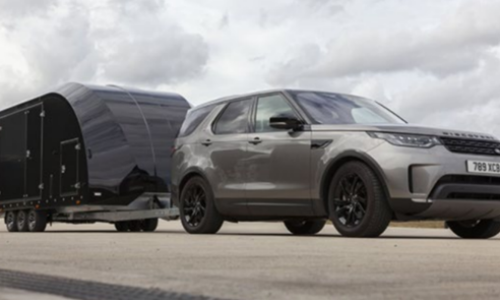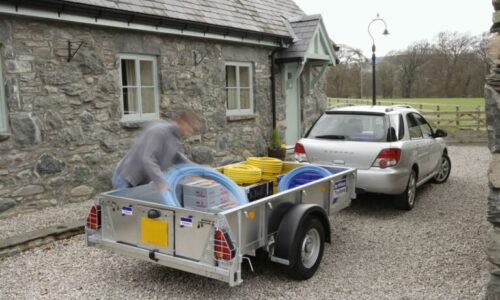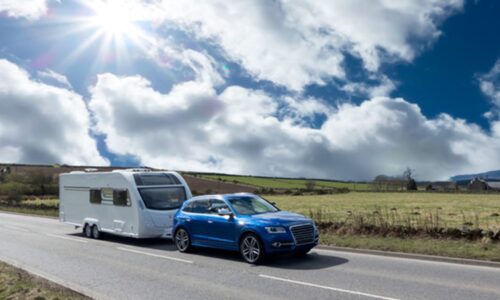About the B+E accreditation scheme
A new voluntary trailer training accreditation scheme has been developed alongside driving training and trailer industries to provide motorists with the skills, knowledge and competencies to tow safely.
The government is committed to road safety and encourages drivers to get professional training before towing for leisure or business purposes.
The Driver and Vehicle Standards Agency (DVSA) and the Department for Transport (DfT) have worked with the trailer training industry by forming the National Council for Accredited Trailer Training (NCATT) to oversee the scheme and set good towing practices.
The DVSA has officially recognised the Skills for Logistics B+E accreditation scheme, which will accredit training centres and instructors and provide quality assurance and certification.
Aims of the scheme
The B+E accreditation scheme is aimed at:
- drivers who want to tow a trailer for leisure or business have the skills, knowledge, and competencies to tow safely
- employees who tow a trailer in connection with their work and help ensure an employer’s corporate responsibilities to make sure safe working practices are met
What is the B+E training syllabus?
The B+E training syllabus sets out how to train drivers in the skills, knowledge, and understanding they need to be safe and responsible whilst towing a trailer with a category B motor vehicle. This category includes cars, vans and pick-up trucks.
The training syllabus was developed by the Driver and Vehicle Standards Agency (DVSA), working in partnership with the Trailer Towing Advisory Group (TTAG) to achieve our goal of keeping everyone safe on Britain’s roads.
To find out more about the requirements for B+E drivers, click here.
Aim of the syllabus
The B+E training syllabus sets out how to train drivers in the skills, knowledge and understanding they need to be safe and responsible whilst towing a trailer with a category B vehicle.
On successful completion, drivers will be able to discuss and demonstrate the following 12 competencies of driving whilst towing a trailer with a category B vehicle:
- Preparing the vehicle for a journey
- How to guide and control the vehicle whilst towing
- How to competently reverse the vehicle with the trailer attached
- How to uncouple and recouple the trailer safely and competently
- Use the road under the Highway Code
- Drive safely and responsibly in the traffic system
- Road safety benefits
- Fuel-saving driving techniques
- Safe driving techniques
- Safe loading
- Vehicle-handling techniques
- Legislative requirements
Successful completion of training is demonstrated by the driver's ability to demonstrate all 12 competencies to the trainer's satisfaction. This can be evaluated through ongoing assessment or with a final assessment at the end of the training course. The training will be carried out either by the course trainer or a qualified individual.



Who can take advantage of this training?
From December 16th 2021, people in the United Kingdom who have passed a DVSA driving test, category B, after January 1st 1997, are allowed to tow trailers up to 3,500 KG MAM (Maximum Authorised Mass).
Any driver with a category B driving licence can undertake this training to improve their driving competence. Drivers will gain the skills, knowledge, and understanding needed to demonstrate that they have maintained and continued to improve their driving competence since they gained their full category B driving licence.
How is the training structured?
Drivers must undertake training through the content from the DVSA training syllabus, which provides them with the essential knowledge and training for safe towing up to 3,500 KG MAM with a category B vehicle. The duration of training will be based on a judgement by the trainer of the ability of the driver and the time that will be required for them to meet the aim of the training syllabus.
The training will be a mixture of theory and practical elements.
Vehicle and trailer combinations
You should take your training in a vehicle combination that suits your needs. For some people, this may be a car and a light trailer. For others, there may be a much heavier weight requirement for the trailer and towing vehicle.
Towing combination falls into three broad groups:
- Unbraked trailers - A trailer with a maximum permitted weight of 750kg or lower is not required to have brakes. These trailers are generally used to transport gardening waste or general household goods. If the trailer has brakes, they must be in good working order.
- Medium-sized vehicles and trailers - These are combinations where the Maximum Authorised Mass (or MAM) of the towing vehicle plus the MAM of the trailer or caravan is less than 3,500 kg. A simple way of describing this is that the vehicle and the trailer must not exceed 3,500 KG when the two weights are added together.
- Large category B vehicles, towing large braked trailers - These could include horse trailers, larger caravans, and caged trailers loaded with small plant & machinery.
For example, a large 4X4 SUV with a maximum authorised mass of up to 3,500 kg and tow with a Maximum Authorised Mass of 3,500 KG (horse trailer or a 6-berth caravan).
Whatever you tow, you need to know how to drive, use and operate safely.
You can learn more about safe towing by visiting our safe towing guidance on the GOV.UK website.
Take a look at our accredited B+E members here
To speak to our B+E accreditation team, please fill out our contact form or call us at 0117 927 8800.
